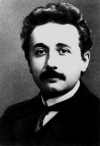Remote Tutoring Sessions
Remote tutoring sessions have been a part of my tutoring practice for over a decade. They have been my entire practice since March 2020, and will remain so until further notice. These sessions can work with anyone anywhere in the world who has a computer (not just a phone, the screen would probably be too small) with reliable, fast Internet access, and a microphone and speaker (or headset).
Aside from the obvious health benefit of remote tutoring, there's also a huge convenience factor for both the student and whoever would transport the student, especially in winter, and there's less environmental impact.
A lot of people remember the nightmare of remote school and are turned off by the prospect of remote tutoring, but I'd like to reassure you that remote one-on-one tutoring is very different from a remote classroom. Groups are really hard to do online. Remote tutoring is more like a phone call, but with great video and audio quality. In addition to Zoom (please ask for the Zoom link), I use some great tools to make mathematics come alive on a computer screen. Mostly I use Notability on my ipad so I can write on a whiteboard almost the old fashioned way, but I also use GNU TeXmacs for real-time math typesetting and GeoGebra or Desmos for graphing and geometry. I can make pdfs of that work available after the session.
While it's not necessary, sessions work best if I can see a student's work as they do it. I know of three options:
- By far the best was is for the student to do what I do on an iPad or other tablet with a stylus like an Apple Pencil. The student can share the screen with me or have the tablet join the zoom (making sure that only one device joins with audio to avoid feedback). Any application that allows the student to write on the screen is fine; I use Notability. (Look up notability for android to find android alternatives.)
- If a tablet is unavailable, another great approach is a stand for a smartphone (e.g this) that can aim the phone camera down at the paper (not all stands can do that). The student joins the zoom on their computer and on the phone. Please make sure to make sure that:
- you use the back camera, not the selfie camera, since it's a better camera;
- the phone is on wifi;
- the phone is connected to a power source (zoom drains the battery quickly);
- only one of the phone and the computer "joins audio" to avoid feedback;
- the work area is well-lit despite the student's hand and the mounted phone.
- A similar approach is to use a document camera which the student aims at their work. Make sure the camera's output is compatible with your computer (usually USB-A or USB-C). Using the zoom settings, the student can switch to the document camera so I can see what they are doing. Again, please make sure the lighting works well.
Please have the student try out their setup with a friend or family to iron out the kinks. Most common issues are audio feedback and bad lighting. You can also try Zoom's test zoom room to at least make sure your Internet and zoom audio and video are set up correctly.
These techniques do make sessions work better, but sessions also work well without these technologies, since I often use my computer screen as my blackboard
. I often take dictation
, so we both see the student's work on my screen, while demonstrating what I hope are good work habits.
Please email any assignments you'd like to work on beforehand. Also, especially for new students but really for anyone, please also send a few pages of some recent work.
If the technology isn't working, please call or text. There's always the possibility that I might not have power or Internet, especially if the weather is interesting.
passionatelycurious.com • Math tutor • Computer Science tutor • What's with the '90s Web site? • contact
